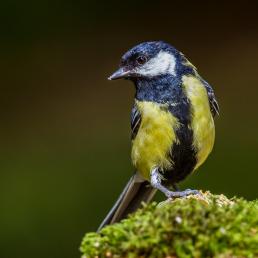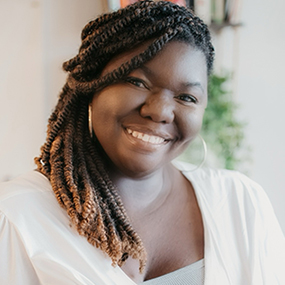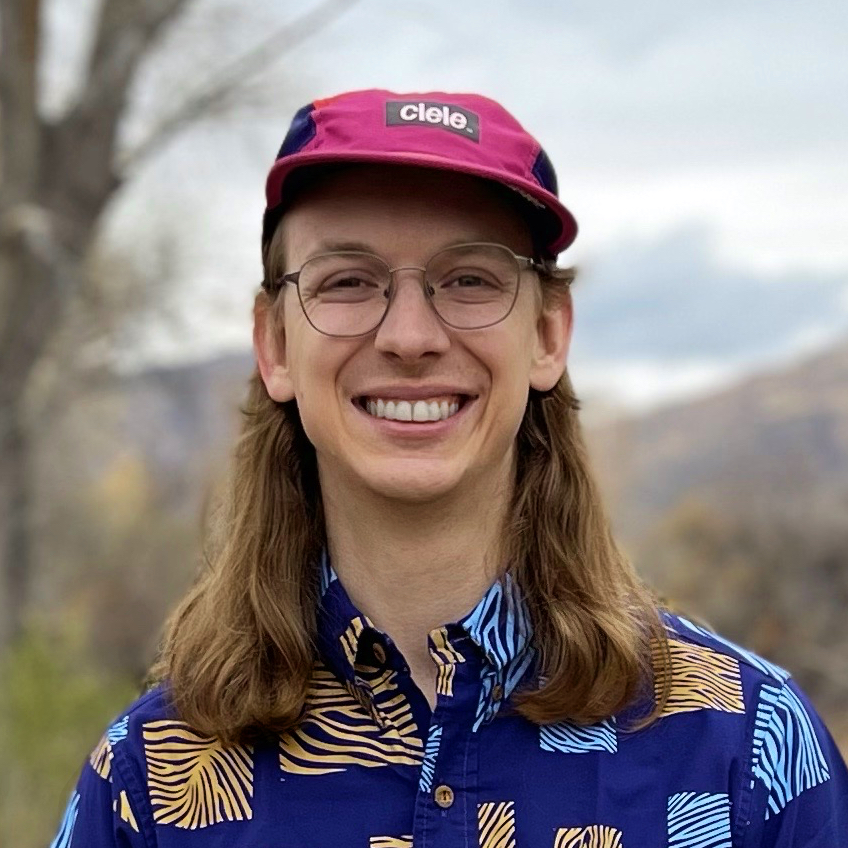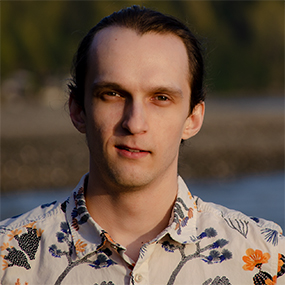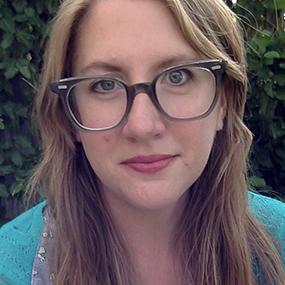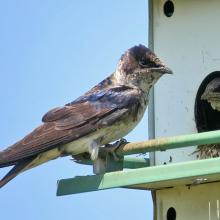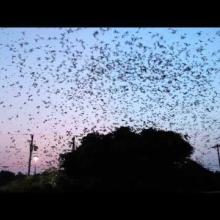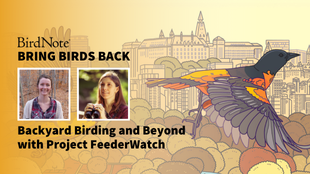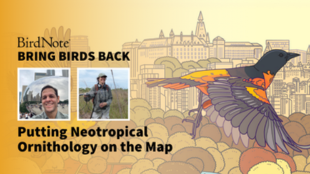

Join BirdNote tomorrow, November 30th!
Illustrator David Sibley and actor H. Jon Benjamin will face off in the bird illustration battle of the century during BirdNote's Year-end Celebration and Auction!
Purple Martins and people have a long history. Native Americans started a practice of providing homes for the birds, which was copied by European colonizers. But those colonizers released invasive species and cleared habitats to the point that the species is entirely reliant on man-made housing. Tenijah talks to Kelly Applegate, Director of Natural Resources for the Mille-Lacs band of Ojibwe about the history of Purple Martins; Joe Siegrist, president of the Purple Martin Conservation Association about how we can help Purple Martins; and 8th grader Kieran McDonald about why he was inspired to devote himself to these birds.
Tenijah Hamilton: BirdNote Presents.
[Echoing Wingflaps SFX]
This is Bring Birds Back. I’m Tenijah Hamilton. When we talk about all the ways we want to try to help our avian friends, we tend to look at the issues from a bird’s eye view—which is to say we usually look at things from a macro level. Like, how can we help all birds? Well today, we’re looking at how we can help a specific species of bird. It’s not one that has the flashiest looks. Though they’re probably in the running for noisiest birds…
[Many Purple Martins chattering at once]
Tenijah Hamilton: Purple Martins! They’re migratory birds, and in the spring and summer they can be found pretty much anywhere east of the Rockies. And they’re the largest swallow in North America. They’re kinda purple though a lot of the time they look more inky-black. And these birds have a complicated relationship with humans. I’ll be talking to three people today to explore the past, present, and future of this bird.
[a few beats of Purple Martin songs in the clear]
For a lot of folks, their love of Purple Martins began when they were young — like for Kelly Applegate. He’s a tribal member of the Mille Lacs band of Ojibwe — who are located in central Minnesota. Kelly’s a biologist and the Commissioner of Natural Resources for the tribe. When he was 10 years old, he noticed that a neighbor had these odd looking birdhouses in their yard and got curious about them.
[Sound of soft breeze over midwestern prairie]
Kelly Applegate: And so I went over there, introduced myself. It was an older gentleman and his wife
Tenijah Hamilton: And they were sitting on lawn chairs under these birdhouses, just, kind of, watching the birds. The couple told Kelly that they were Purple Martins.
[Many Purple Martins chattering at once, quietly under Kelly speaking]
Kelly Applegate: And they filled me in. "Oh, these are the coolest birds and we've had them here for years." And then I could see the colony in action. You know, they're very active, they're flying in and out of the holes, they're feeding their young ones, they're bringing in nesting materials.
[Ethereal ambient music begins]
I rushed home and that weekend we got the bird house up. I waited eagerly, and all of a sudden, one of them showed up.
[Purple Martin - a single martin calling]
There's really nothing like a Purple Martin when it discovers a new house. And it was flying around. And they kind of do this, like almost like a screaming thing, where they're announcing that they're there and they're diving through the sky and kind of checking the area out.
Unfortunately — because we had the house too close to trees, it was the wrong color, the holes were too small — the bird landed on the house, checked it out a little bit and then took off back to the neighbor's place to set up residence there.
Tenijah Hamilton: Undeterred, Kelly did some renovations, making things more up-to-spec for the martins. Like, he painted it white so it would stay cooler in the sun.
Kelly Applegate: And we put that up and within a day or so, the martin came back and he was happy.
[Purple Martin - Several Purple Martins joyfully chattering]
And he set up residence, stayed in the house and attracted a mate. And I had my first pair of Purple Martins then. And there was nothing I was more proud of as a ten-year-old than to have them birds nesting in my yard.
[Ethereal music rises for solo, then fades out]
[Prairie and martin ambience fades out]
Tenijah Hamilton: At this point, Kelly can’t even remember how many houses he’s put up, but he’s helped a lot of birds. He's taking part in a tradition that goes way back.
Kelly Applegate: Native Americans have a rich history with this bird.
Tenijah Hamilton: The practice originated with tribes in the Southeast, like the Cherokee, Chickasaw, and Choctaw.
Kelly Applegate: They would use gourds for storing water and dry goods, over the winter and whatnot. And, in order to use the gourds, they'd have to dry them out, so they'd put them on these racks in the air but they found that these Purple Martins were really attracted to these gourds and were starting to nest in them.
Tenijah Hamilton: There isn’t much historical record for exactly when and which tribe first did this. But from passed down histories, we know Native Americans quickly found a lot of benefits to having the birds around:
Kelly Applegate: A lot of times, tribes would harvest berries that needed to dry, would have drying meats or hides or things like that that would attract predators that would come in to try to take their drying goods.
The Native Americans found that if they had this Purple Martin colony, because they're defensive of their nesting area, they would drive off things that would come in and try to steal the community's goods. So they were kind of like, uh, security.
Tenijah Hamilton: [Laughs] Security detail.
Kelly Applegate: Yeah, security detail for, for the tribal community, for their foods and materials that they were harvesting.
They also served as entertainment. You know, like you could just sit and just like that story I started off with, of the elderly couple just out there watching them. It's just mesmerizing to see that and see the social activity of the birds.
Tenijah Hamilton: Another benefit of having the birds around? Purple Martins eat a TON of insects — something like a quarter of a TRILLION flying insects a year. So they can act as a natural control on pest insects.
Kelly Applegate: So those are some of the early benefits that we know that early tribes of North America, the benefits there and the relationship with Purple Martins. And we still practice those connections. As commissioner of the natural resources here, we make it a point to provide homes for those birds.
Tenijah Hamilton: Indigenous people and Purple Martins had this truly symbiotic relationship. But then, things changed for the birds when European colonists arrived in America.
Joe Siegrist: Western colonialism and Western expansion kind of ruined things for them, habitat wise.
Tenijah Hamilton: This is Joe Siegrist, president of the Purple Martin Conservation Association.
Joe Siegrist: But also, that existing relationship with humans is what's saved them.
[Slightly ominous, mellow synth music begins]
Tenijah Hamilton: Prior to European colonization, Purple Martins lived alongside Native Americans in the gourds. And, they also nested naturally as "secondary cavity nesters."
Joe Siegrist: They nest in a hole that they didn't make themselves, like woodpecker holes.
Tenijah Hamilton: The colonists saw the Purple Martins nesting in the gourds that the Native Americans put up and all the benefits the birds brought. And so they thought “that’s a pretty good idea” and copied the practice and started putting out gourds and birdhouses, too. But then colonists did two things that would throw everything out of balance for the Purple Martin.
Joe Siegrist: The settlers came west, clearing forests, making a life for themselves, but destroying Purple Martin habitat in the meantime.
And, at the same time, European settlers brought over two invasive species.
Tenijah Hamilton: The settlers wanted to have birds that reminded them of home, and they thought these same birds might help control pesky insect populations. And so they unleashed European Starlings and English House Sparrows into America.
Joe Siegrist: They started spreading like wildfire. And the problem with those two species is they are also secondary cavity nesters and they out-compete Purple Martins for that existing, nesting habitat.
So even though a House Sparrow is half the size of a Purple Martin, they'll go in there and they will kick Purple Martins’ butts. They will kill adults. They'll kill babies and break eggs.
Tenijah Hamilton: Wow.
Joe Siegrist: But they come in and they absolutely take over. And so it was a combination of habitat loss and pressure from these two invasive species that led to the current state of affairs, which is: east of the Rockies, where 98, 99% of all Purple Martins are, they don't nest at all in natural habitats. The only place that they can nest and reproduce is in human provided artificial nesting boxes.
You know, humans, we're both the saving grace now, but also the cause of the issues that they faced as far as getting nesting habitat.
Without Native Americans establishing that tradition, that would have been it for them. Westerners would have come over, cleared the land and established invasive species, sparrows and starlings. And that would have been it.
[Synth music fades out]
Tenijah Hamilton: It’s a complicated history for the bird. On the one hand, it’s a huge success that people have been able to keep this bird around. But we’re protecting them from a problem entirely created by European colonists — created while they were also comitting genocide against the Indigenous people who taught them the benefits of these birds in the first place.
But Indigenous people are to thank for saving Purple Martins — that’s a legacy that Kelly Applegate is proud of — and wants to see continue long into the future:
Kelly Applegate: My goal is, you know, to see these birds survive and pass this down to our future generations, you know? Here as a tribal member, we try to plan for our next seven generations to come. And I would enjoy nothing more than to know that this species will be around for our future generations to enjoy the way I do.
And, if there isn't an advocate for that species, who will it be?
[Somber and tense music begins]
Tenijah Hamilton: After the break, we're going to look at what's involved in caring for these birds, and the problems they're facing today. Be right back.
[Tense music fades]
[MIDROLL AD BREAK]
Tenijah Hamilton: Nowadays, Purple Martins have kind of a cult following. Like, when you call the Purple Martin Conservation Association, their hold music is the birds’ song.
Joe Siegrist: And during the winter, when people's Purple Martins aren't around, they will call and ask to be put on hold so they can hear that song again. And in the spring, when they first hear that song, folks will call us and they're crying because they're so excited that the Purple Martins are back.
Tenijah Hamilton: Joe and the Purple Martin Conservation Association work with tens of thousands of people who look after these birds. And many of them call themselves "Purple Martin Landlords."
Joe Siegrist: Yeah. You know, the name is, uh, less than ideal. I think landlord doesn't necessarily have the most, uh, positive connotation, especially these days. But whatever your opinion of landlords are, these groups of folks who self identify as Purple Martin landlords, they wear it as a badge of honor.
Tenijah Hamilton: A big part of what sells people on becoming a Purple Martin landlord, beyond the benefits of them eating bugs and being fun to watch, is just hearing the birds’ story:
Joe Siegrist: There's this kind of responsibility that people are struck with when they hear the story about how the future of this species is very much in your hands. As soon as you learn the story about these guys and how all you have to do is put a birdhouse in your backyard, and then you are very much a one-to-one part of conserving this species.
For those that get started, they absolutely start to look at these birds as almost family members. If they've nested in your backyard and they were successful, they will come back the following year and there's this feeling that this bird went through all of this herculean effort to fly across the Gulf of Mexico, thousands of miles, braving the wilderness of the Amazon rainforest, all that to come right back to your backyard, to see you again the next year to nest and raise babies in your backyard.
[Plucky, driving music begins]
Tenijah Hamilton: Now, Joe is on a mission to recruit more purple martin landlords. He’s going to take us through how to be a good caretaker for the birds:
Joe Siegrist: Okay. Okay. Now we're getting down to it. All right. So being a good martin landlord, you got to pick the right kind of house. This is a pretty good sized bird. And they can have upwards of six or seven babies in there, which all will get the same size as the adult parents before they leave the nest.
Tenijah Hamilton: So the Purple Martin Conservation Association recommends having nest compartments that are six inches wide and twelve inches deep — deep enough that predators like owls can't reach in with their legs. The size of the hole also matters so starlings can't fit in. And another consideration for a good martin house?
Joe Siegrist: This is a colonial species that doesn't want to be solo. It wants to be with other Purple Martins. You know, the safety in numbers, so you want to have something with, let's say six compartments or six gourds or more.
Tenijah Hamilton: Once you've got a house picked out, it's important to pick a good place to put it! The most important thing is putting it in an area that's relatively free of trees.
Joe Siegrist: They have kind of a sense of security if there's open space around their colony. Their biggest predators are probably hawks and owls. And if there are tall trees nearby, there's just inherent hiding spots for those predators to hang out. So, usually what I tell folks is, if the nearest tree would fall and hit it, the tree’s either too close or too tall.
Tenijah Hamilton: So your martin house is up in the perfect spot, and you get your first "tenants". The work doesn't end there — it's important to monitor the colony.
Joe Siegrist: If you've got a Purple Martin house, you're probably gonna be watching it every day, just because it's interesting. But at the very least, we say, take a peek once a week.
Lower the house down, just take a look in there. Something seem weird? Are they covered with parasites? Are they not getting fed enough?
I don't want to imply that these birds are, you know, constantly needing babysitting attention. Really the most important thing you can do above all else is to make sure that sparrows and starlings don't get established first and don't take over.
So if you see sparrows start to put some pressure on things, trying to build, pull out their nests. Beyond that, once the Purple Martins get started, they do pretty good job taking care of themselves.
Tenijah Hamilton: Do people feel bad about pulling out the sparrows and the starlings, like, to stay on key, we're evicting them as a landlord?
Joe Siegrist: [Laughs] Yeah, exactly. Yeah, I mean, there are elements of that, but you know, in conservation you have to make choices based on the native species that's at need. And the sparrows are an invasive species and they wreak havoc with the natural ecosystem.
So they'll find somewhere to nest. They'll go nest in the gutter of your house, they'll go nest in a garbage can, whatever, you know. The problem is Purple Martins won't go nest somewhere else. They gotta have what you've got in the backyard.
[Plucky music fades out]
Tenijah Hamilton: Like Kelly, Joe thinks a lot about the future of Purple Martins. Which brings us to a hard truth about Purple Martin Landlords:
Joe Siegrist: It’s an increasingly older demographic. And just like we said before, this species is pretty much going to require people out there to put up birdhouses for them forever, really, you know. So our responsibility is then to constantly be reaching new generations.
Tenijah Hamilton: Joe doesn't think the hobby skews older because Millenials and Gen Z are lazy or uninterested or too focused on avocado toast to care about these birds. Older people are just more likely to have time and resources, and eventually younger generations get older and they take up the mantle. That’s how it’s always worked. But today, Joe sees a very different obstacle to getting young people involved:
Joe Siegrist: Honestly, my biggest concern right now is an economical concern. The trend of generations now not necessarily being people who own property anymore, that own their house and own a lawn. There's so much of a trend towards renting right now, economically, to where that really is a concern to me because this requires putting something out in the yard, this big bird house, and landlords — not the positive connotation of the Purple Martin ones, but the ones that actually own the property that we're trying to do this (on) — they may not be amenable to that. Or, since, whoever's living on that property, renting doesn't necessarily have this kind of identity, like this is my spot. Then they may not have that notion to put something that's more of a permanent feature of the property. That is one of the reasons why we're steering more towards public parks, city buildings, churches, schools, places where more people can be exposed to a Purple Martin colony and get that bug.
Tenijah Hamilton: This approach, of martin houses on shared communal spaces, means more people can get to know these charismatic birds, generating interest in the practice. And it also means anyone can help manage these community colonies, regardless of whether they own property. This has helped bring younger landlords into the flock — like, a lot younger.
Kieran McDonald: I am from Austin, Texas. Was born and raised here. I've put up two Purple Martin colonies now. And, uh, I'm in the eighth grade.
Tenijah Hamilton: This is Kieran McDonald, the Doogie Howser of Purple Martins. Kieran became obsessed with the birds three years ago, when he was in 5th grade. His mom's boss invited the family to a "Purple Martin Roost Party" with the local Audubon chapter, in a suburb just north of Austin. As the martins migrate to and from Brazil, they join up and roost together in groups of hundreds of thousands of birds. Kieran got to watch a massive flock of martins murmurate around at dusk, and it felt… magical.
[Ambient, sparkling music begins]
[A fair number of Purple Martins singing, under Kieran’s voice]
Kieran McDonald: You get there and it's like sunset. And then kind of all of a sudden you see up in the sky, maybe just a hundred or so birds and they start circling around the area where you are.
And then, slowly, over the course of the next 30 or so minutes birds will trickle in. And then you end up with hundreds of thousands of birds circling over your head diving and swooping. One bird moves, then all the rest of the birds follow it.
[Recording fades to a much larger group of birds — many Purple Martins singing at once]
It's not like you're watching 4,000 individual birds. It's like you're watching a collective of 4,000 birds that are thinking the same way, doing the same thing.
How like, in harmony and connected each individual bird is with the rest of the birds. And it's amazing.
[Many Purple Martin calls solo, then fade]
[Sparkling music fades]
Tenijah Hamilton: After Kieran saw this avian spectacle, he started talking to the Audubon leaders. They told him the story of the martins, and how they've come to rely on people for housing. How, without enough people continuing this practice, we’d lose these birds.
Kieran McDonald: It seemed hard to process that 400,000 birds in one spot— that they were in danger of not becoming a viable species and staying around.
Tenijah Hamilton: The Audubon folks told Kieran about being a Purple Martin landlord and what makes a good spot for a Purple Martin colony. But Kieran’s family's home wasn’t really a good fit for the birds. So he started brainstorming on what would be better.
Kieran McDonald: So, you know, I was thinking about, where are places where there's a lot of open fields, you're going to see humans, but they're not going to be too terribly close.
Tenijah Hamilton: And then he had an idea: his elementary school!
Kieran McDonald: Cause a lot of schools have these big open grounds with lots of space and there's, you know, sports fields. So that kind of seems like the natural place and a great place to put a Martin colony.
Tenijah Hamilton: Kieran didn't waste any time. He put together a little presentation for his school's "eco committee" about why this project is a great conservation opportunity, and they loved the idea. He organized a fund drive at the school for the costs of martin houses, and raised over $1,200!
Tenijah Hamilton: You have to be so proud of yourself and proud of your community and your classmates for kind of rallying behind this cause. Was that really cool to see for you?
Kieran McDonald: Yeah. It was really interesting, cause you can make a lot of things happen with just getting everyday, ordinary people to step up and care.
Tenijah Hamilton: Finally, Kieran got the Purple Martin housing all installed and set up, ready for when the birds got to Austin. And then one day in the spring Keiran and his parents walked up to the field to check the colony...
Kieran McDonald: And we saw, uh, you know, the silhouette of a bird. And we had a pair of binoculars with us. So we pulled them out, and we're looking at it and it was moving around. It was actually a martin.
[A single Purple Martin calling]
It was a very happy moment. Our project had come to fruition and now we would have the chance to actually help martins.
Tenijah Hamilton: Today, Kieran is a middle schooler and he’s in the Scouts BSA - formerly known as the Boy Scouts. And recently he was thinking about projects to earn his Distinguished Conservation Service Award. And so he thought: you know what this middle school needs? A martin colony. He convinced the principal, raised more money, took everything he learned from the first colony in setting up this new one just in time for spring. And he worked with one of the science teachers at the school to take this project even further, in an elective called "Animal Studies."
Kieran McDonald: They have a big unit on birds where they learn about bird anatomy and you know, how birds behave, things like that.
Tenijah Hamilton: And so maintaining the martin colony and learning how to be a Purple Martin "landlord" is now integrated into that class.
Kieran McDonald: It's, I think one of the best ways to kind of, see wild birds and keep them wild, but you also get to see how they grow up and develop and fledge, and it's very interesting. Whereas, you know, when you go birding, you're seeing a bird at one snapshot in time, right? So you're looking at one bird at one time, and that's what it's doing on that particular day. But if you're taking care of a martin colony, you kind of get the whole history from the egg, all the way up to the fully grown bird.
Tenijah Hamilton: Thank you so much, Kieran. I want to make sure you absolutely can see your impact in this space. There are so many people, it seems, who would never even think about the Purple Martin if you hadn't first brought it up and advocated for them. So I hope you're proud of yourself and I hope you see how many people are now sold on these birds and want to help them and bring them back. And that's, in part, because of you.
Kieran McDonald: Thank you so much for having me on. I really appreciate it.
[Sweet, hopeful music begins]
Tenijah Hamilton: Kieran McDonald is getting ready to graduate from middle school, and he’s pretty focused on handing over the reigns to the martin colony there. But some of his friends in Scouts are thinking of doing similar projects at their schools — and if that happens, you know Kierran will be there.
You can find links to great resources about how to set up your own Purple Martin colony, details of what makes the best houses, where to put them, and forums to get advice from Purple Martin experts — just go to BirdNote.org to learn more.
Bring Birds Back is produced by Mark Bramhill and me, Tenijah Hamilton. Sam Johnson is our production assistant. We're edited by Oluwakemi Aladesuyi and Allison Behringer of Rough Cut Collective. Our fact checker is Conor Gearin. Our Content Director is Allison Wilson. Scoring is by Cosmo Sheldrake, Blue Dot Sessions, and Sam Johnson. Special thanks to Rehka Murthy and Lenna Mendoza.
[Hopeful music ends]
######################
SFX:
Bird sounds provided by The Macaulay Library of Natural Sounds at the Cornell Lab of Ornithology, Ithaca, New York. ML10743 Purple Martin recorded by Wil Hershberger. ML109259 Purple Martin recorded by Geoffrey A. Keller. ML437174481 recorded by Jeff Ellerbusch. ML8092 Purple Martin recorded by Robert C. Stein.
“QP0085 - Prairie day wind crickets” recording provided by Quiet Planet.
MUSIC:
“Nightjar” and “Nightingale Part 2” by Cosmo Sheldrake
“White Caps” by Sam Johnson
“Lamprey”, Tuck and Point”, “The Trundle” by Blue Dot Sessions
About guest Kelly Applegate:
Kelly Applegate is a tribal member of the Mille Lacs Band of Ojibwe and currently serves as their Commissioner off Natural Resources. He has been working with Purple Martins since 1984, and has led local efforts in Minnesota to bring purple martins back from steep population declines. Kelly has been involved in ground-breaking research in collaboration with York University and the Purple Martin Conservation Association which tracked purple martins to their wintering grounds in South America and their journeys there in back. Kelly enjoys a large colony of purple martins in his backyard in central Minnesota and enjoys caring for them and sharing his knowledge and passion for the species.
About guest Joe Siegrist:
Joe Siegrist lives with his family in Erie, Pennsylvania, and is President/CEO and directs research for the Purple Martin Conservation Association. Before focusing on martins, he conducted avian research for the University of Illinois and the Illinois Natural History Survey studying Acadian Flycatchers, Northern Bobwhite and Neotropical migrants in general. In addition to conservation research, he has also worked as an educator teaching high school science, a zookeeper, a naturalist and a stay-at-home parent. He has presented at both local and regional scientific conferences and frequently speaks at public events, representing the Purple Martin Conservation Association (PMCA). Joe serves on the board of the Erie Bird Observatory, North American Bluebird Society, and Alveus sanctuary. He is focused on engaging the younger generation and instilling in them an understanding of the need for conservation of both aerial insectivores and cavity-nesting birds.
About guest Kieran McDonald:
Kieran McDonald lives in Austin, Texas where he recently completed the 8th grade at Kealing Middle School and is looking forward to starting High School in the Fall where he will attend The Liberal Arts and Science Academy. Kieran loves lots of outdoor activities including, camping, hiking, backpacking, kayaking, fly fishing and birding. He has many pets including 1 dog, 2 lizards and several fish. Kieran swims competitively year-round, likes playing the cello, has achieved the rank of Life Scout as a part of Troop 61 Scouts BSA and is currently working towards becoming an Eagle Scout.
